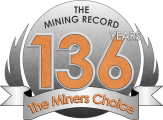Phase One Expansion At The Wild Dog Project
VANCOUVER – Great Pacific Gold Corp. reported on expanded Phase 1 diamond drill program at its flagship Wild Dog Project, located on the island of New Britain, East New Britain Province, Papua New Guinea (PNG). The Phase 1 program is focused on the Sinivit target, a portion of the 15km Wild Dog epithermal structural corridor.
WDG-12 intercepted two well mineralized structures: First Structure: 5.9 m @ 14.38 g/t AuEq from 123.2m (14.0 g/t Au, 0.18% Cu, 12.4 g/t Ag), including 2.5m @ 32.0 g/t AuEq from 126.6m (31.3 g/t Au, 0.28% Cu, 24.7 g/t Ag). Second Structure: 5.8 m @ 6.15 g/t AuEq from 177m (5.1 g/t Au, 0.54% Cu, 15.4 g/t Ag), including 3.0 m @ 10.9 g/t AuEq from 179m (9.1 g/t Au, 0.96% Cu, 28.5 g/t Ag).
WDG-13 completed and intersected two mineralized zones characterised by quartz-sulphide veining and brecciation. Assay results are pending, and WDG-14 is currently in progress, targeting depth and strike extensions of the same structural corridor. The second drill rig (dual purpose sonic / diamond) has been shipped and is on route to the project site. Camp construction for the expanded drilling crew is well underway with drilling expected to begin in December 2025. LiDAR survey results received: The program generated a Digital Terrain Model with sub-10 cm vertical accuracy, providing critical topographic control for geological modelling, drill planning, and infrastructure layout. The dataset is currently being further analyzed and used to support structural mapping and refine target definition across the broader Wild Dog district.
“The Sinivit target on the Wild Dog epithermal structural corridor continues to deliver high-grade results. In addition, we are starting to build an advanced understanding of the structural controls for mineralization at Sinivit. Holes WDG-08, 12 and 13 define a coherent high-grade pod within the broader Sinivit structure, with WDG-14 underway and continuing to test this area. Mineralization beneath the Northern Oxide area (10, 10A and 11) appears weaker, consistent with our current model and historical results. This variation is typical of epithermal systems near surface,” said Greg McCunn, CEO.
Related Posts
EDMONTON - Sranan Gold Corp. reported on the Randy's Pit target at its Tapanahony Project,…
VANCOUVER - Koryx Copper Inc. reported on progress at its two large scale exploration licences…
VANCOUVER - Myriad Uranium Corp. has just completed a large-scale helicopter-borne radiometric and magnetic survey…



